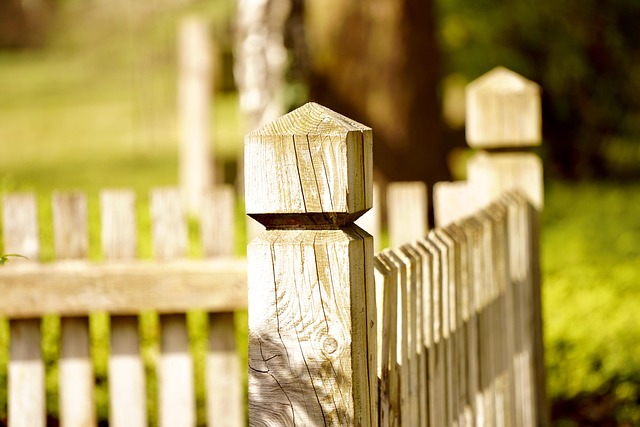For New Bedford, Massachusetts homeowners considering DIY fence installation, a successful project requires careful planning and selection of suitable materials. This article guides you through every step, from understanding local permits and accurate measurement to choosing durable fencing options suited to the region’s climate. We provide a detailed, step-by-step installation guide and essential post-installation tips to ensure your new fence stands the test of time.
- Planning Your Fence Project: Permits & Measurement
- Choosing the Right Fence Material for New Bedford Climate
- Step-by-Step Guide: Installing Your Fence
- Post-Installation Maintenance Tips for Longevity
Planning Your Fence Project: Permits & Measurement
Before starting your DIY fence installation, careful planning is essential to ensure a smooth and successful project. The first step involves obtaining any necessary permits from the New Bedford, Massachusetts local government. Check with your town or city clerk’s office to understand the requirements for fence construction, as regulations can vary. You’ll likely need to apply for a building permit, which may come with specific guidelines on materials, height restrictions, and set-back requirements.
Accurate measurement is another critical aspect of planning. Measure the perimeter of the area where you want to install the fence to determine the total length needed. Consider any gates or openings you plan to incorporate and adjust your measurements accordingly. Create a detailed layout or sketch to visualize the fence’s design, including posts, rails, and panels. This will guide your material selection and help you avoid last-minute changes during installation.
Choosing the Right Fence Material for New Bedford Climate
When it comes to fence installation in New Bedford, Massachusetts, selecting the appropriate material is key to ensuring longevity and durability. Given the region’s variable climate—with cold winters and humid summers—it’s essential to choose a fence that can withstand these conditions. Wood has long been a popular choice for fences, but it requires regular maintenance due to weather exposure. A more durable option could be vinyl fencing, which is low-maintenance and resistant to rot, warping, and chipping. Alternatively, chain link fencing offers excellent strength and security without the need for frequent repairs, making it suitable for areas prone to harsh weather.
Consider factors like material cost, ease of installation, and local aesthetic preferences when making your decision. Local climate conditions play a significant role in determining the lifespan of fence materials, so choosing something that aligns with New Bedford’s specific weather patterns is a practical step towards long-lasting fence ownership.
Step-by-Step Guide: Installing Your Fence
Step-by-Step Guide: Installing Your Fence
1. Measure and Plan: Begin by assessing your property lines and deciding on the fence’s layout and style. Measure the perimeter carefully, considering any curves or odd angles. Create a detailed plan, including the dimensions of each section, to ensure precise cuts for the posts, rails, and panels. Gather all necessary tools and materials: posts, brackets, fasteners, concrete, a post-hole digger, measuring tape, a level, and your chosen fence panels.
2. Site Preparation: Clear the area where you plan to install the fence of any debris or obstructions. Dig holes for the fence posts using the post-hole digger, ensuring they are deep enough (typically 3/4 of the post’s height) and wide enough to support the weight of the fence. Use the level to ensure each hole is horizontally aligned. Place a concrete footing in each hole, allowing it to set and cure according to the manufacturer’s instructions. Once the concrete is solid, attach the posts securely using brackets and fasteners. Check that each post is plumb (perfectly vertical) and level before moving on.
Post-Installation Maintenance Tips for Longevity
After successfully installing your new fence, proper maintenance is key to ensuring its longevity and maintaining its aesthetic appeal. Regular cleaning is a simple yet effective practice; use a soft brush or cloth to remove dirt, dust, and debris that can accumulate over time. Avoid power washers, as they may damage the fence’s surface.
Inspecting your fence for any signs of wear and tear is another vital maintenance step. Keep an eye out for loose posts, rusted hardware, or damaged boards. Promptly addressing these issues will prevent minor problems from becoming major repairs. Applying a fresh coat of paint or sealant every couple of years can also protect the fence from the elements, preserving its color and strength.
